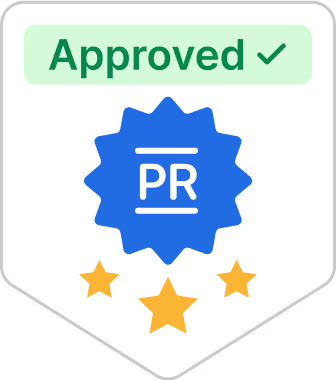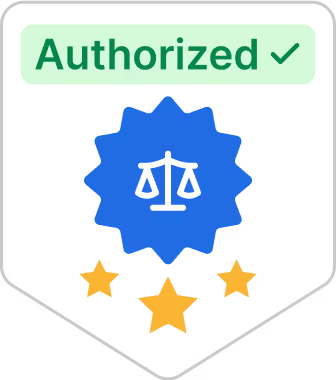How are partnerships taxed?

Owning your own small business has many benefits. You get to pursue a dream and control your daily activities to a certain extent. However, filing taxes becomes more difficult when you’re a business owner.
If your business is a general partnership, you’re probably wondering do partnerships pay taxes or even what is a partnership business? No, the general partnership entity doesn’t have to pay income business taxes, but individual partners pay tax on the profits they receive from the business.
This guide walks you through everything you must know to get your ordinary income business taxes filed correctly and on time.
Business partnerships and taxes
Taxes can be a confusing part of your business life. After all, you may be wondering if they don’t pay income taxes, how are partnerships taxed? Because the business structure distributes profits and liability amongst the partners, these individuals are responsible for paying the taxes. Some owners consider this a benefit of a partnership—the business itself doesn’t have to file income partnership taxes.
Filing tax returns
There are three forms you’ll need to be familiar with as a partnership, including:
- Form 1065 – This form is filed by the partnership for informational purposes. It reports on the partnership’s income, gains, profits, partnership losses, and deductions. Each partner then reports their share on their individual and business income tax returns.
- Schedule K-1 – Each small business partner is required to complete Schedule K-1 (or limited partner member statement). This outlines how much partnership profit a partner has received from the partnership and how much income tax they’ll have to pay.
- Schedule SE (Form 1040) – For general partnerships and unlimited liability partnerships, you must pay self-employment taxes using the schedule SE form. These partnership taxes are what you pay into Social Security and Medicare. It usually amounts to about 15.3% of your business income minus certain deductions.
Estimating and paying taxes
You’re probably wondering how you do all of the math and figure out what your tax-payment responsibilities are. Luckily, some tools can assist you, including:
- Balance sheets – A balance sheet is a statement that shows the financial position of a business. There are sections for assets, liabilities, and the equity an owner has in the business. Liabilities and owner equity must equal the total assets a company has.
- Profit and loss statements – A partnership profit and loss statement allows you to track your business’s expenses and profits throughout the year. It should include all business transactions for the year. The sum of profits minus the sum of partnership losses equals your business’s net income.
- Cost of goods sold – If you sell products, you’ll also need to calculate the value of your inventory. This includes any items you’ve purchased from a wholesaler but has not yet sold. The cost of goods sold is the difference between how much inventory you started the year with and how much you have remaining at the end of the year.
You’ll need these worksheets to help you estimate the amount of tax you must pay.
FAQs About partnerships and taxes
If you still have questions about partnership taxation, you’re not alone. Tax filing is always a tricky process, and the stakes are even higher when you’re responsible for your own business. Some of the most commonly asked questions business owners like yourself have include:
When are partnership profits taxed?
Partnership profits are taxed annually. According to the IRS, partnerships must file their Form 1065 no later than March 15th. If March 15th falls on a weekend or a holiday, the due date is the next business day.
This gives individuals one month from the time the 1065 is completed to file their taxes with the schedule K-1 attached.
How do self-employment taxes apply to partnerships?
Self-employment taxes can be a little tricky. A few tips to help you understand self-employment tax and your role in a partnership include:
- Limited partners don’t pay self-employment tax – If you are an unlimited liability partner or a general partner, you must pay self-employment tax. However, limited liability company partners don’t have to pay as their profits and holdings in the company are typically lower than liable partners.
- Factor in Social Security and Medicare contributions – Self-employment tax equals the amount you would’ve had taken out of your paycheck by your employer plus the employer’s contribution to Social Security and Medicare.
- Know what limits apply to Social Security contributions – There are limits to how much you’re required to contribute for Social Security. For 2021, the limit of ordinary income taxed for your Social Security contribution is $142,800.
How do partnerships handle expenses and deductions?
You can list certain expenses and deductions on your tax return with a few caveats, including:
- The expenses must have occurred while conducting limited partnership business
- Your limited partnership agreement must explicitly state that the partnership covers those expenses
Some possible deductions you might claim include home office expenses and travel costs.
To avoid having to set up a partnership in person, simply fill out this EIN application form to apply for a partnership online right now.
Sources:
- U.S. Small Business Administration. Choose a Business Structure. https://www.sba.gov/business-guide/launch-your-business/choose-business-structure
- IRS.gov. Tax Information for Partnerships. https://www.irs.gov/businesses/partnerships
- IRS.gov. Instructions for Form 1065 (2020). https://www.irs.gov/instructions/i1065
- The Balance. What Are Self-Employment Taxes? https://www.thebalancemoney.com/self-employment-taxes-explained-397651
Social Security Administration. Update 2021. https://www.ssa.gov/pubs/EN-05-10003.pdf























